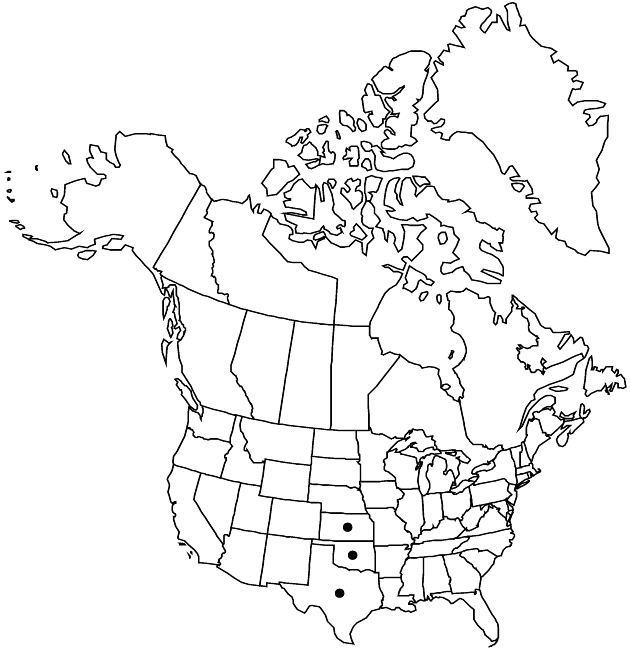Pyrrhopappus grandiflorus
Trans. Amer. Philos. Soc., n. s. 7: 430. 1841.
Perennials (possibly flowering first-year), 5–30 (–45+) cm (roots or rootstocks producing tuberiform swellings 1–15 cm below soil surface). Stems usually scapiform, usually branching from bases, proximally glabrous or sparsely to densely pilosulous. Cauline leaves 0 (–3), proximal mostly lanceolate, margins usually pinnately lobed, distal linear-filiform, margins entire. Heads borne singly or 2–3 in loose, corymbiform arrays. Calyculi: bractlets 8 in 1 (–2) series, linear to subulate, 3–8 mm. Involucres cylindric to turbinate, 17–25 mm. Phyllaries 13–22. Florets 40–60+; anthers 4.5–5 mm (pollen equatorial diameters 46–52 µm). Cypselae: bodies stramineous, 4–5 mm, beaks 6–7 mm; pappi 10–12 mm. 2n = 24.
Phenology: Flowering Apr–Jun.
Habitat: Disturbed sites, calcareous, loamy, or sandy soils
Elevation: 100–800 m
Distribution

Kans., Okla., Tex.
Discussion
Pyrrhopappus grandiflorus has been reported from Arkansas and New Mexico; I have seen no specimens of it from those states.
Selected References
None.
Lower Taxa
"fine" is not a number.